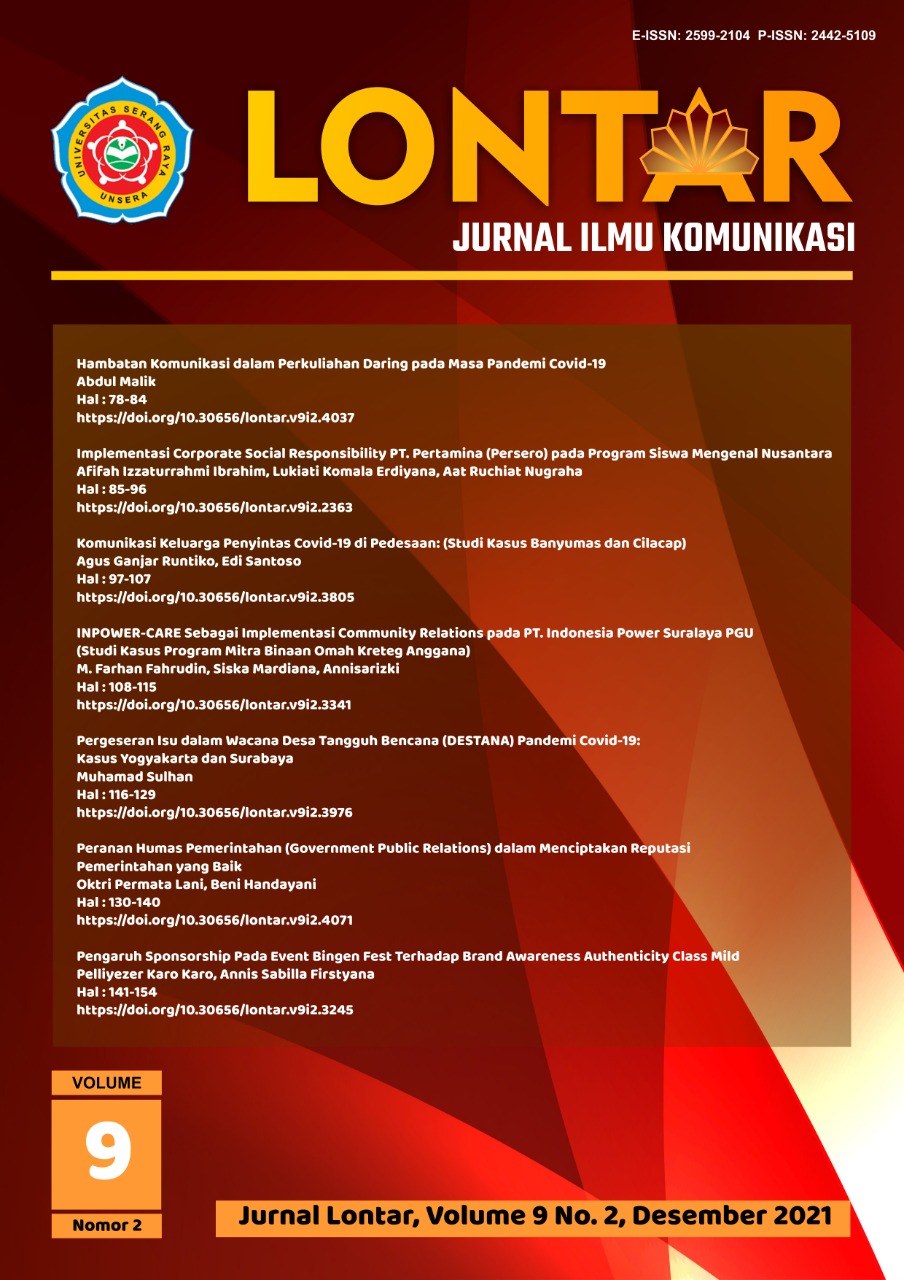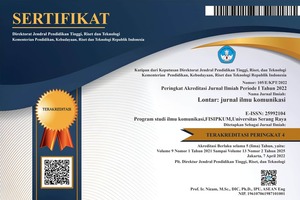Implementasi Corporate Social Responsibility PT. Pertamina (Persero) pada Program Siswa Mengenal Nusantara
DOI:
https://doi.org/10.30656/lontar.v9i2.2363Keywords:
CSR, Implementation, Effectivity, Diversity, BUMNAbstract
ABSTRACT
The diversity of tribes, religions, races, and between groups for the Indonesian people is a strength to build a great nation. The younger generation's understanding of the cultural diversity of Indonesia is fading due to the impact of globalization, so an education program for love of the homeland is needed. One of the educational programs is the Student Know the Archipelago Program which is sponsored by a company that is part of a State-Owned Enterprise (BUMN) conducted by PT. Pertamina in Papua Province. The purpose of this research is to know about implementing Corporate Social Responsibility through the student program to know Nusantara by PT Pertamina (Persero). The research method used is a descriptive study with qualitative data types through data collection techniques conducted utilizing interviews, observations, and literature studies. The results showed that in the planning phase of PT Pertamina SMN CSR program which refers to the concept of Hohnen shows there is still some inconformity implementation of CSR program due to the condition of Papua area that has limitations in access to information and communication. This limitation can make the lack of a valid CSR program SMN 2018 held by PT. Pertamina (Persero) in campaigning for the diversity of Indonesian culture. Simpulan showed that PT. Pertamina has been striving to be able to realize the CSR program as a manifestation of the responsibility of BUMN present for the state.
References
Ardianto, E. (2011). Metode Penelitian untuk Public Relations Kuantitatif dan Kualitatif. Simbiosa Rekatama Media.
Hadi, N. (2014). Corporate social responsibility. Graha Ilmu.
Hohnen, P. (2007). Corporate Social Responsibility - An Implementation Guide For Business. In J. Potts (Ed.), International Institute for Sustainable Development (iisd). International Institute for Sustainable Development.
Kotler, P., & Lee, N. (2005). Corporate Social Responsibility. John Willey & Sons.
Mahfud, M. (2013). Komunikasi Indonesia. Profetik, 6(1), 5–22.
Nazir, M. (2009). Metode Penelitian. Ghalia Indonesia.
Parani, R., Pramesuari, A., Maldiva, D. M., & Felicia, E. (2018). Mempertanyakan Kembali Bhinneka Tunggal Ika Di Era Post Truth Melalui Media Sosial. LONTAR: Jurnal Ilmu Komunikasi, 6(2), 152. https://doi.org/10.30656/lontar.v6i2.953
Pitasari Nurina Dwi. (2019). Komunikasi Partisipatoris dalam Pembentukan Desa Wisata di Desa Durian Demang Kabupaten Bengkulu Tengah. Jurnal Lontar, 7(2).
Rumani, M. A. (2002). Dasar-dasar public relations. PT. Grasindo.
Salam, N. E., & Awza, R. (2007). Pengelolaan corporate social responsibility (CSR) dalam membangun citra perusahaan. Jurnal Ilmu Komunikasi, 2(2), 73–82.
Sugiyono. (2007). Memahami Penelitian Kualitatif. CV. Alfabeta.
Untung, H. B. (2008). Corporate social responsibility. Penerbit Sinar Grafika.
Wahyudi, I., & Azheri, B. (2008). Corporate social responsibility: prinsip, pengaturan & implementasi. SETARA Press.
Zainal, A., Citra, T., Farza, N., Thohiri, R., & Putra, P. D. (2018). Implementasi Corporate Social Responsibility (CSR ) PT. Pertamina (Persero) Marketing Operation Region (Mor) I – Terminal Bahan Bakar Minyak (Tbbm) Siantar : Pemberdayaan Ekonomi Masyarakat Berbasis Potensi Lokal Melalui Program Bangun Industri Desa (BID). Jurnal Pengabdian Kepada Masyarakat, 24(2), 723–729.
Zubair, F. (2015). Pemahaman pengusaha dalam penerapan CSR oleh PT. Indocement Tunggal Prakarsa, Tbk. di Citeureup Bogor. Jurnal Kajian Komunikasi, 3(1), 56–64.
Downloads
Published
Issue
Section
License
By submitting an article to the journal, the author(s) agree to transfer the published article's copyright to the journal, which will act as the publisher. This means the journal will have the right to publish the article in various forms, including reprints. The journal will maintain the publishing rights to the published articles.
In line with the license, authors and third parties (readers, researchers, and others) are allowed to share and adapt the material. In addition, the material must be given appropriate credit, provided with a link to the license, and indicated if changes were made. If authors remix, transform, or build upon the material, authors must distribute their contributions under the same license as the original.






